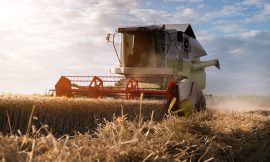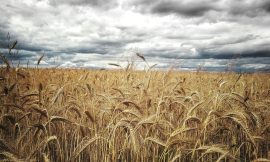September arabica coffee (KCU25) on Tuesday closed down -4.50 (-1.49%), and September ICE robusta coffee (RMU25) closed down -111 (-3.15%).
Coffee prices on Tuesday fell back after Monday’s surge of +5.36% in arabica coffee and +9.42% in robusta coffee. Monday’s surge was sparked by concern about dry conditions in Brazil after Somar Meteorologia reported on Monday that Brazil’s largest arabica coffee-growing area, Minas Gerais, received no rain during the week ended July 12.
Don’t Miss a Day: From crude oil to coffee, sign up free for Barchart’s best-in-class commodity analysis.
Coffee prices also saw some weakness from Tuesday's +0.5% rally in the dollar index, which undercut the prices of most commodities, including coffee.
Coffee prices continue to see downward pressure from Brazil's coffee harvest. Brazil's Cooxupe coffee co-op said Tuesday that the harvest among its members was 49.3% completed as of July 11. Cooxupe is Brazil's largest coffee cooperative and Brazil's largest exporter group. In related news, Safras & Mercado reported last Friday that Brazil's overall 2025/26 coffee harvest was 69% complete as of July 9, ahead of the comparable level of 66% last year and the 5-year average of 62%. The breakdown showed that 88% of the robusta harvest and 58% of the arabica harvest were complete as of July 9.
Arabica coffee prices have support from President Trump's announcement last Wednesday that he would impose 50% tariffs on US imports from Brazil, effective August 1. That threat caused concern that coffee supplies could be disrupted from Brazil, the world's largest producer of arabica coffee.
Coffee prices have retreated over the past two months on the outlook for abundant coffee supplies. On June 25, the USDA's Foreign Agricultural Service (FAS) forecasted that Brazil's 2025/26 coffee production will increase by +0.5% y/y to 65 million bags and that Vietnam's 2025/26 coffee output will rise by 6.9% y/y to a 4-year high of 31 million bags. Brazil is the world's largest producer of arabica coffee, and Vietnam is the world's largest producer of robusta coffee.
Coffee prices are also under pressure from an increase in ICE-monitored inventories after robusta coffee inventories jumped to a 10-month high of 5,492 lots Tuesday. Also, ICE-monitored arabica coffee inventories rose to a 5.25-month high of 892,468 bags on May 27 and were moderately below that high at 831,612 bags as of Tuesday.
Due to drought, Vietnam's coffee production in the 2023/24 crop year decreased by -20% y/y to 1.472 MMT, the smallest crop in four years. Also, Vietnam's General Statistics Office reported that 2024 Vietnam coffee exports fell by -17.1% y/y to 1.35 MMT. Additionally, the Vietnam Coffee and Cocoa Association reduced its 2024/25 Vietnam coffee production estimate to 26.5 million bags on March 12, down from a December estimate of 28 million bags. By contrast, the Vietnam National Statistics Office reported on July 7 that Vietnam's Jan-Jun 2025 coffee exports were up +4.1% y/y to 943,000 MT.
The USDA's biannual report, released on June 25, was bearish for coffee prices. The USDA's Foreign Agriculture Service (FAS) projected that world coffee production in 2025/26 will increase by +2.5% y/y to a record 178.68 million bags, with a -1.7% decrease in arabica production to 97.022 million bags and a +7.9% increase in robusta production to 81.658 million bags. The USDA's FAS forecasts that 2025/26 ending stocks will climb by +4.9% to 22.819 million bags from 21.752 million bags in 2024/25.
For the 2025/26 marketing year, Volcafe projects a global 2025/26 arabica coffee deficit of -8.5 million bags, wider than the -5.5 million bag deficit for 2024/25 and the fifth consecutive year of deficits.
On the date of publication, Rich Asplund did not have (either directly or indirectly) positions in any of the securities mentioned in this article. All information and data in this article is solely for informational purposes. For more information please view the Barchart Disclosure Policy here.
The views and opinions expressed herein are the views and opinions of the author and do not necessarily reflect those of Nasdaq, Inc.




